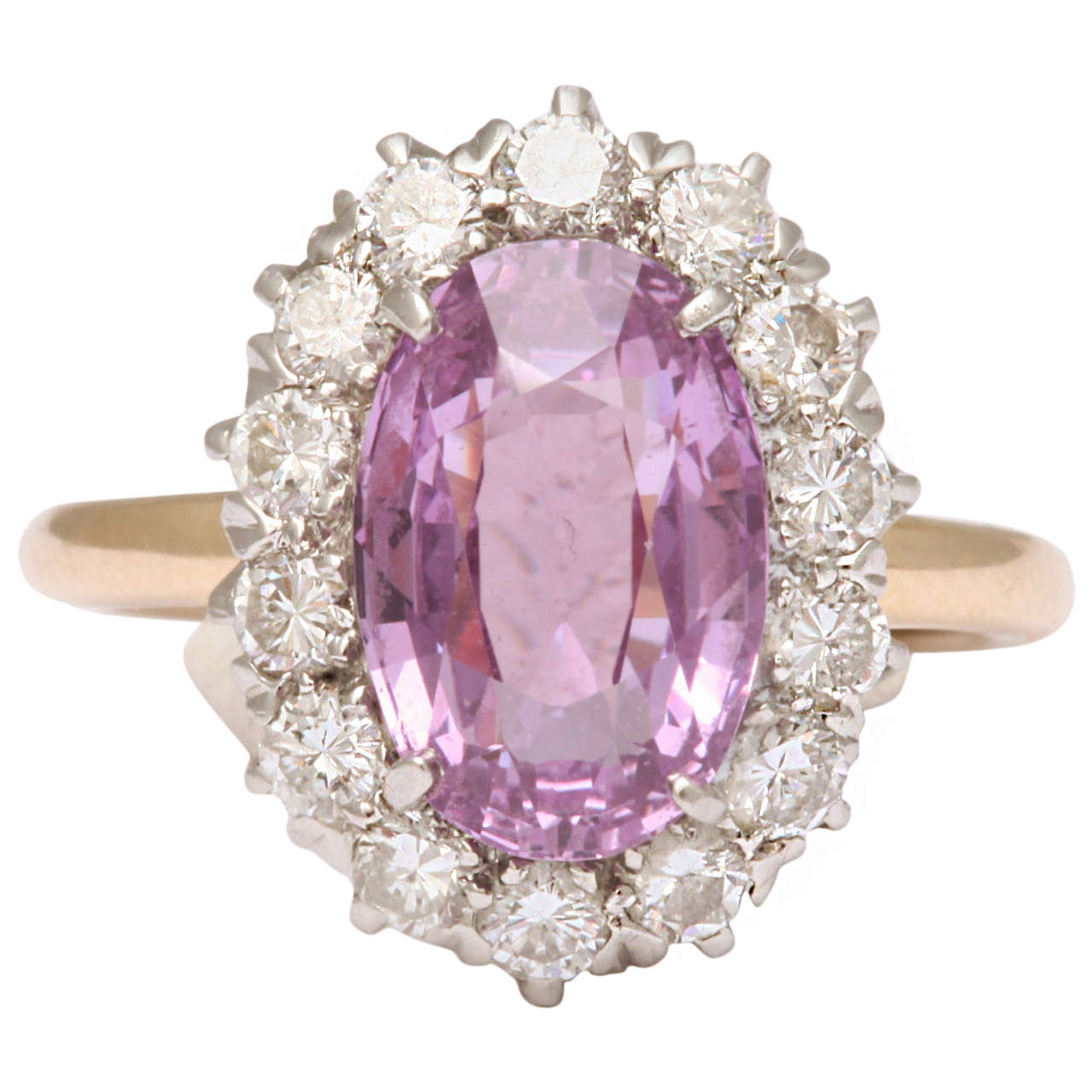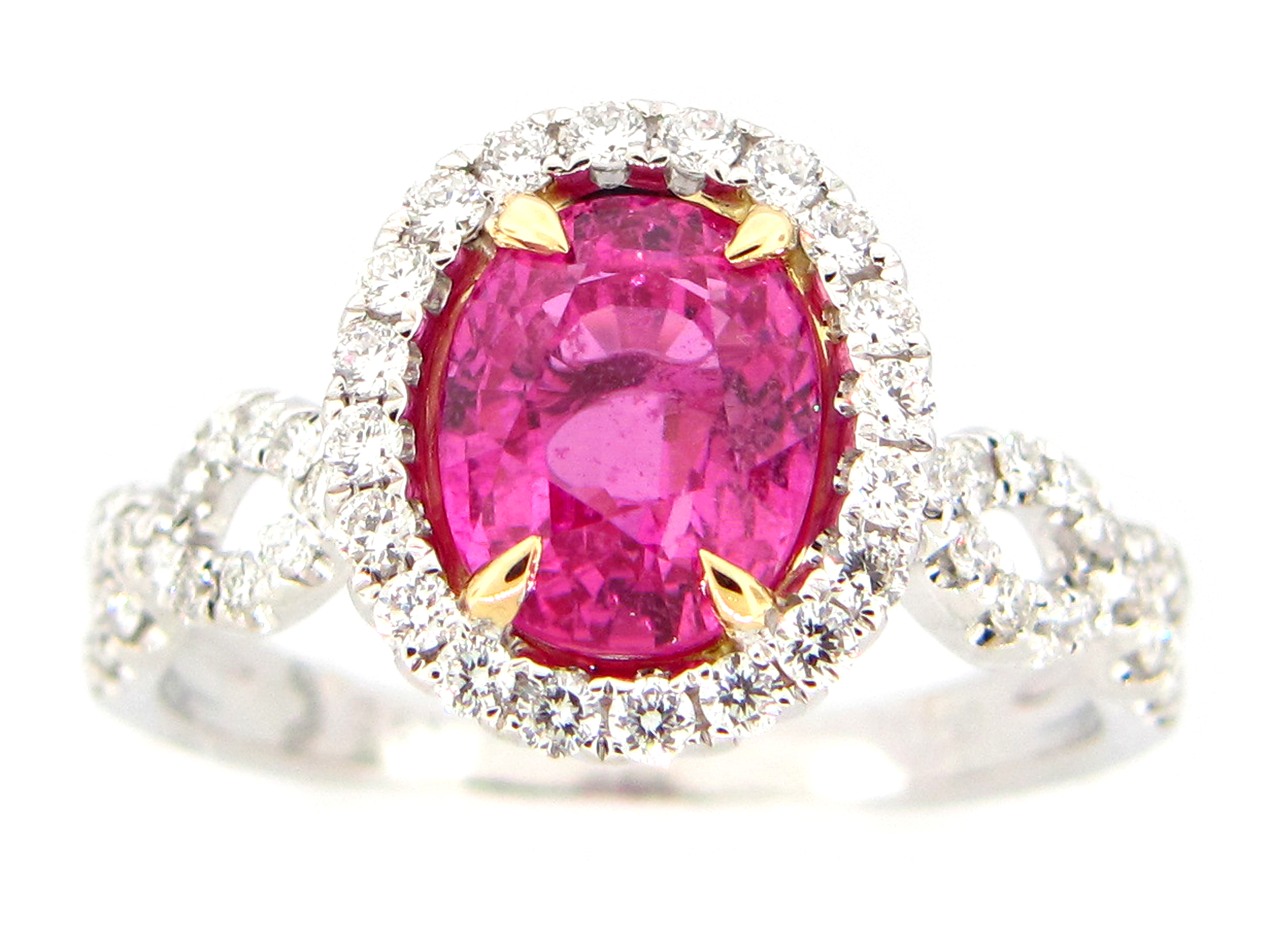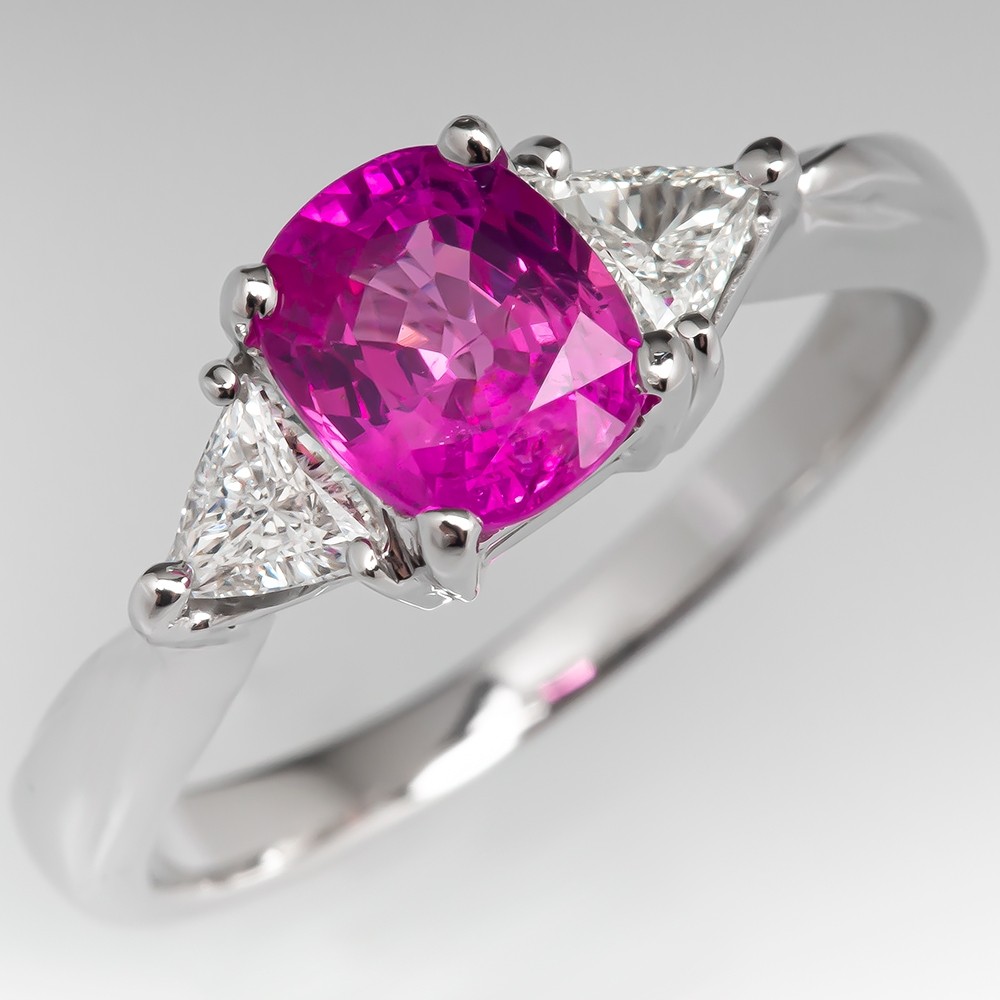
This is unlike natural gems, which comes in whatever shape and size the Earth gives us. Because humans control how large to grow Lab Pink Sapphire crystals in our labs, we also get to pick out how big our finished gems are.

Production of Lab Pink Sapphire by scientists is a much more sustainable practice than mining gems (which often requires tunneling and digging into the Earth). Couples choose Lab gems for several reasons, including: Also, Lab Sapphire is eye clean and comes in a bigger variety of sizes and shapes than its natural counterpart. So, it’s still a 9/10 in hardness, and it still comes in a variety of pink shades. Scientists create Lab Sapphire for our pleasure! Lab Sapphires have the exact same chemical and visual properties as the natural kind. For example, the Royal engagement of Princess Diana and Princess Eugenie are Natural Sapphire Engagement Rings. Choosing a Natural stone also continues traditional practices, whereas Lab stones are a newcomer to the market. So, they choose something that is rare, which they believe will retain value better. In other words, couples want their engagement ring to be something that’s handed down generation after generation. Natural stones are also often chosen for legacy purposes. They love the mystique of something so bright and beautiful being made by our planet. It is a rare gem and considered one of the four “ precious gemstones.” Couples choose Natural gems for several reasons, including: It naturally occurs in various shades of pink, from light to dark, and from orangey to flamingo pink, to slightly purplish.

Natural Pink Sapphire is mined from the Earth. Couples choose one or the other for various reasons, including cost, sustainability, and tradition.

The first step in choosing a stunning Pink Sapphire engagement ring is selecting whether you want a Natural or a Lab gem. Choose Natural vs Lab-Created Pink Sapphire Custom Pink Sapphire Ring 7 Easy Steps to Choosing the Best Pink Sapphire Engagement Ring 1.


 0 kommentar(er)
0 kommentar(er)
